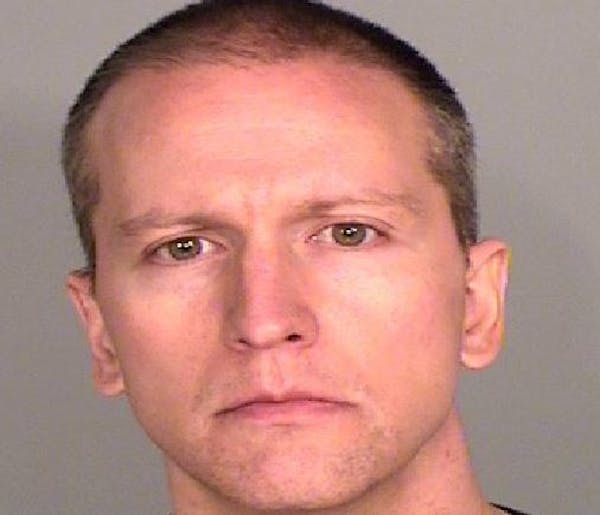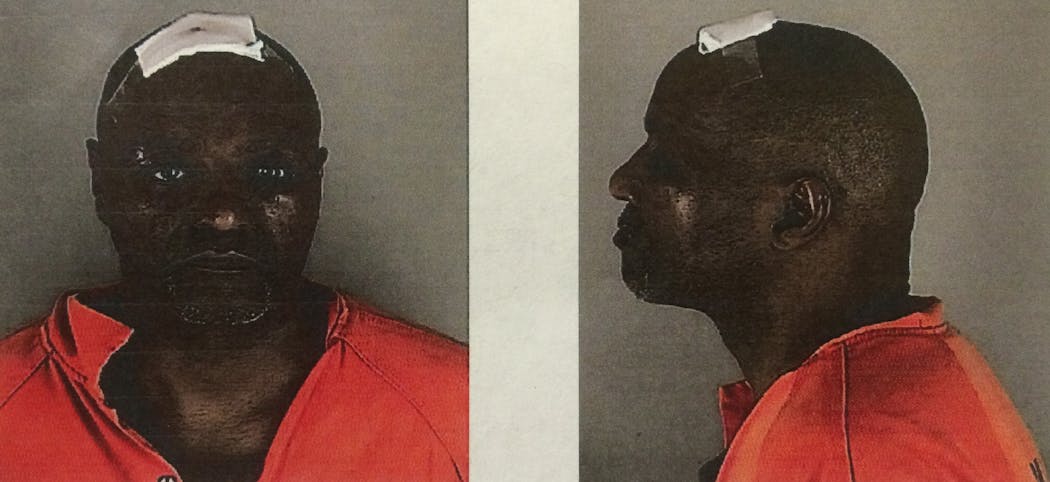The murder trial of Derek Chauvin is not the first time a Minneapolis police officer has gotten into trouble for using force on a handcuffed suspect.
In 2017, a Minneapolis cop was convicted of assault and sentenced to six months in the county workhouse after he shattered a suspect's jaw with a kick during an arrest. The year before, two officers were caught on camera punching a handcuffed and apparently intoxicated man. In the latter case, both were fired but won their jobs back through arbitration.
The trend is not recent.
More than 23 years ago the city paid a nearly $54,000 settlement to a man after he was punched and kicked by an officer who later pleaded guilty to federal charges in the case.
A Star Tribune review of news reports and court records found at least 11 instances since 1995 of Minneapolis officers being accused of punching, kicking or otherwise assaulting people who were restrained. It is unknown how many actual instances occurred, since not every case may attract media attention or result in lawsuits or criminal charges.
While in several cases officers were fired, only two faced charges for their conduct before the Chauvin case.
In the most recent case, a jury found Christopher Reiter guilty of third-degree assault four years ago for an incident in May 2016 in which he kicked a handcuffed suspect while responding to a domestic assault call. The kick knocked the man unconscious and caused a traumatic brain injury. Before sentencing him to six months in a county workhouse, the presiding judge told Reiter that he "abused his position of trust and committed a serious assault."
In 1997, a one-time Minneapolis police officer, Anthony M. Barragan, was charged in federal court in the beating of a man arrested on suspicion of sexually assaulting an employee of the group home where the man was living. That suspect, too, was in restraints.
"Handcuffing is sort of the law of demarcation where it takes a whole lot of justification to use force after somebody's handcuffed, and it better be proportional to what a person did after somebody's handcuffed," said St. Paul-based attorney Paul Applebaum, who represented the man assaulted by Reiter in a civil suit against the former officer and the city of Minneapolis. "A police officer better have a good reason if he dumps a handcuffed suspect on his head."
Reiter was named in a lawsuit brought two years before that event by community activist Al Flowers, who accused police of excessive force after saying he was punched repeatedly and kicked by officers before being dragged out of his home — all while in handcuffs.
In the Chauvin case, the since-fired officer is captured on bystander video pinning the handcuffed Floyd with his knee for 9 minutes and 29 seconds. Floyd's death last May sparked widespread protests against police brutality and racial injustice nationwide.
On Friday, jurors in his trial heard from a longtime Minneapolis homicide detective, Lt. Richard Zimmerman, who testified that officers are taught it is their responsibility to safely transport a suspect to jail after an arrest.
He also testified that it was "totally unnecessary" for Chauvin to put his knee on a handcuffed George Floyd's neck during Floyd's arrest last spring — particularly after he stopped resisting. The remarks amounted to the strongest condemnation yet of Chauvin's actions from a former colleague.
Zimmerman testified that once a suspect is handcuffed, the threat level "goes down all the way."
Once the cuffs are on a suspect, Zimmerman said, "that person is yours. He is your responsibility. His safety is your responsibility. His well-being is your responsibility."
Chauvin's attorney countered by arguing that officers are not trained to automatically let their guard down after a suspect is in handcuffs, while pointing out that Zimmerman was not a use-of-force expert.
Robert Pusins, a 35-year law enforcement veteran in Florida, said that despite public perception, even with their hands bound suspects can still be combative and harm an officer.
"There are other assaultive behaviors that a handcuffed person can engage in, such as kicking, head-butting, knee strikes," said Pusins, who has testified as a use-of-force expert in state and federal cases.
The exact cause of Floyd's death while in police custody promises to be a central theme in the case against Chauvin, whose attorney has argued that Floyd died of a drug overdose and pre-existing health issues. The Hennepin County Medical Examiner's Office ruled cardiac arrest as the cause of death, but Floyd's family attorneys believe he died of asphyxiation from having Chauvin's knee pressed on his neck.
In either case, MPD Chief Medaria Arradondo and other officials have said publicly that Chauvin's conduct was not consistent with department training on subduing uncooperative people.
The department's policy on use of force, last revised in July, bars officers from using physical force on restrained people, "except as objectively reasonable to prevent their escape or prevent imminent bodily injury to the individual, the officer, or another person."
"In these situations, only the amount of force necessary to control the situation shall be used. Force used against a restrained or handcuffed individual shall be viewed with increased scrutiny in determining reasonableness," the policy reads.
Longtime activist Dave Bicking said that he heard similar defenses when he served on the now-defunct Civilian Police Review Authority, but then as now he thought "it seems like an excuse, because the high-profile cases were of people who were in handcuffs and were not resisting."
"Being in handcuffs is not an absolute bar to any use of force, but almost always it is. But there are plenty of cases where police officers want to punish someone afterward," said Bicking, a member of Communities United Against Police Brutality.
"Oftentimes after there is adrenaline, use of force is more about punishment than it is about keeping control or bringing somebody under control," he said.
Libor Jany • 612-673-4064 Twitter: @StribJany
New Minnesota GOP leaders seek peace with party's anti-establishment wing

Who is Republican Lisa Demuth, Minnesota's first House speaker of color?

Minnesota House GOP, Secretary of State Steve Simon return to Supreme Court
Supreme Court sides with DFL and Simon, says 68 House members needed for floor action





